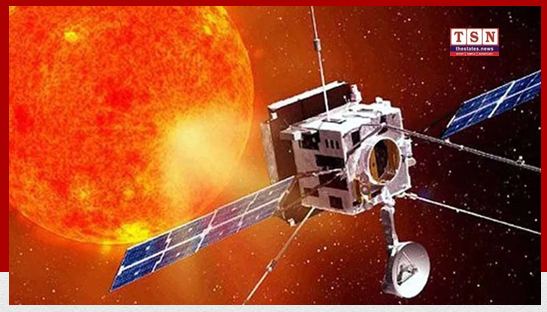Chennai, (Thestates.news)| In yet another significant achievement in India’s first solar exploratory
mission, the Magnetometer boom on Aditya-L1 satellite was successfully deployed in L-1 halo orbit, Indian Space Research Organisation (ISRO) said on Thursday.
In an update, ISRo said the 6-meter long magnetometer boom on the Aditya-L1 satellite has
been successfully deployed. It was deployed in the Halo orbit at the Lagrange point L-1, on January 11, 2024.
The boom had been in stowed condition for 132 days since the Aditya-L1 launch. The boom carries two state-of-the-art, high-accuracy fluxgate magnetometer sensors that measure the low intensity interplanetary magnetic field in space.
The sensors are deployed at distances of 3 and 6 meters from the spacecraft body.
Mounting them at these distances minimizes the impact of the spacecraft generated
magnetic field on measurements, and using two of them assists precise estimation
of this influence.
The dual sensor system facilitates cancelling out the spacecraft’s magnetic influence,
ISRO said. The boom segments are constructed from carbon fibre reinforced polymer and serve
as interfaces for the sensor mounting and mechanism elements. The articulated boom
mechanism comprises 5 segments interconnected through spring-driven hinge mechanisms,
allowing for folding and deploying actions.
The deployment occurs in an accordion fashion, controlled by a novel patented Kevlar
closed control loop mechanism, with hinges locking the segments into the deployed
configuration.
During the stowed condition, the boom is securely held in position by two hold-downs,
transferring launch loads to the spacecraft body. A thermal cutter-based release system is employed to execute the boom deployment on command.
Date received through the telemetry switches confirm the hold-down release, first motion,
and locking of all hinges. The observed in-orbit deployment time was approximately 9 s, well within the predicted range of 8 to 12 s. All telemetry indications for hinge locking and hold-down release were within nominal parameters, it said.(UNI)
Saturday, July 12, 2025
Sun mission : Magnetometer boom on Aditya-L1 satellite successfully deployed in L1 halo orbit
R.O.NO.13286/74
×
![Popup Image]()




hardik pandya new
RMP



- Lord Shri Krishna Earned the Title of Jagadguru Through the Teachings of Maharshi Sandipani: CM Dr. Mohan Yadav
- Nishadraj – Eternal Symbol of Devotion, Equality and Service
- Senior Officers Should Continuously Review Progress of New Government Recruitments : CM Dr. Yadav
- Chief Minister Dr. Yadav reviews ongoing ghat construction on Kshipra river
- Sandipani Schools Emerge as Centers for Holistic Development of Students : CM Dr. Yadav
Recent Posts
- CM Vishnu Deo Sai’s Toughest Action Yet Against Corruption
- Cabinet Decisions
- Durga Das Uikey calls on Chhattisgarh CM Vishnu Deo Sai
- Chhattisgarh Government’s Landmark Action: A Strong Message of Zero Tolerance Against Corruption
- 10TH FILMFARE AWARDS MARATHI 2025 WINNER LIST OUT! ‘PAANI’ WON BEST FILM, MAHESH MANJREKAR BAGGED BEST ACTOR IN A LEADING ROLE (MALE) WHILE PRAJAKTTA MALI AND VAIDEHI PARSHURAMI RECEIVED BEST ACTOR IN LEADING ROLE (FEMALE)
Recent Comments
No comments to show.
VIDEO
© 2025 The States News - Design by Rahul 9407771000.







